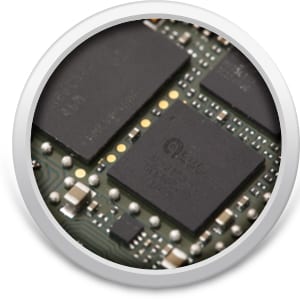Altair discusses TCO as it relates to the Internet of Things
LAS VEGAS – Category 1 chipsets, produced by companies like Altair, offer the low price point and long lifespan essential for large scale industrial “Internet of Things” deployments.
While flashy consumer-facing IoT devices grabbed the attention of visitors to this weeks CES 2016 event, the real story is the chipsets that allow enterprises to conduct global asset tracking, power usage and similar operations that result in reduced operational expense.
Many IoT devices are not located near a battery source so they need long-lasting batteries to make them viable parts of the IoT ecosystem. Ericsson and AT&T teamed up with chipmaker Altair to address the IoT battery life issue, and RCR Wireless News caught up with Altair’s Eran Eshed, co-founder and VP of marketing and business development.
“Our strategy from day one was developing high performance and yet very cost and power efficient LTE chipsets as opposed to chipsets that have fallback to 2G and 3G,” Eshed said. “Until maybe two years ago most of our business was centered around broadband. These were Category 3 and above, so 100-plus [megabits per second]. About two years ago we identified that there was a need for long range wireless technology to connect a very wide range of what today is known as IoT applications, previously [machine-to-machine]. Back then, the LTE standards were not as well developed in the lower categories as they are today. Today we have chipsets that are extremely small, extremely low power.”
With Ericsson, Altair Cat 1 LTE chipsets can last more than 10 years based on the power saving mode featured in an Ericsson evolved packet core for GSM and LTE networks. It allows devices to enter sleep mode for hours or even days at a time, only waking up when they are needed.
Kathryn Weldon of Current Analysis thinks this could be a game changer for industrial IoT.
“Long-lasting batteries are very important for certain industrial Internet use cases, because many deployments include wirelessly connected (and in some cases power-hungry) assets that are in the field for long periods of time without human intervention,” Weldon said in an email. “For example, in mining and utilities verticals, (including both energy and water-level monitoring), companies have long-term contracts with OEMs and carriers that provide them with remote sensor reading/data transmission, but if the battery in the wireless module dies it may be relatively inaccessible for maintenance crews to fix, or the fact that it is not working may not even be recognized for a long period of time. Some of these devices may be in the field for five to 10 years without ever being serviced (in fact we hear that mobile operators often have long-term deals in the five- to 10-year range for these kinds of deployments).”
Eshed said total cost of ownership is key to determining an IoT business model.
“The module cost is only a part of that. I think we’ve solved the chipset part. So far, cellular has just been too expensive, too power hungry,” Eshed said. “Our aim is to make this thing as simple as Wi-Fi or Bluetooth. You don’t have to worry about provisioning or SIMs.”
The Altair chipsets can be updated to Cat M or narrowband IoT through an over-the-air firmware update.

